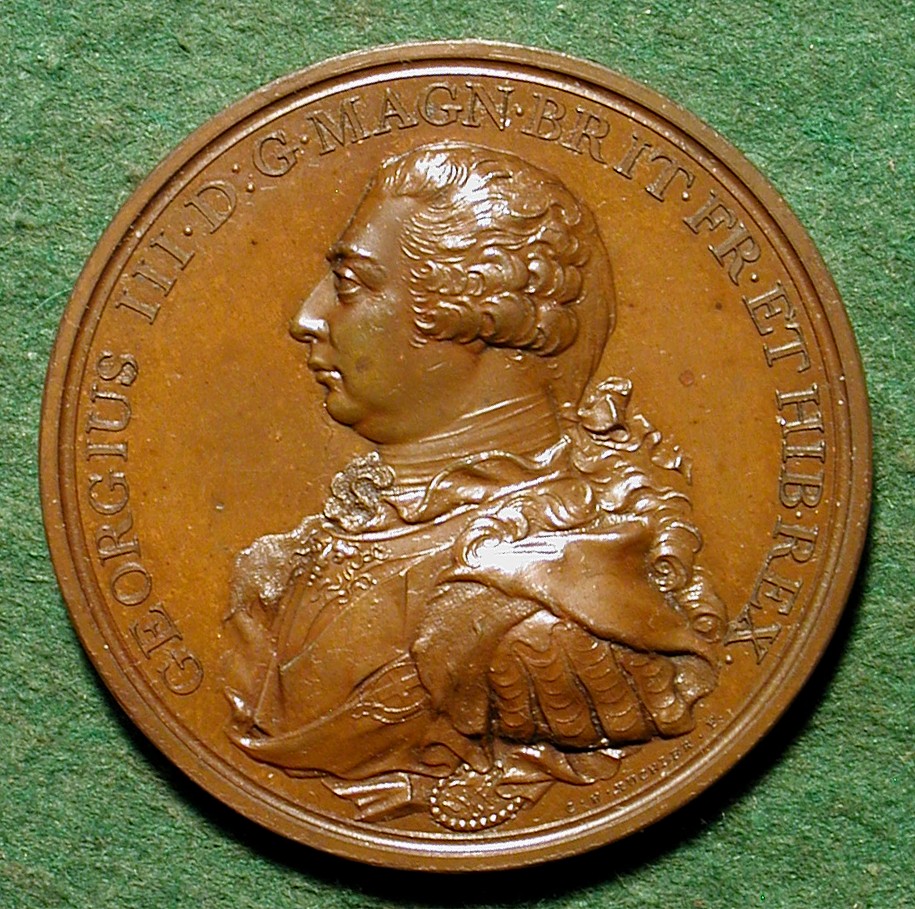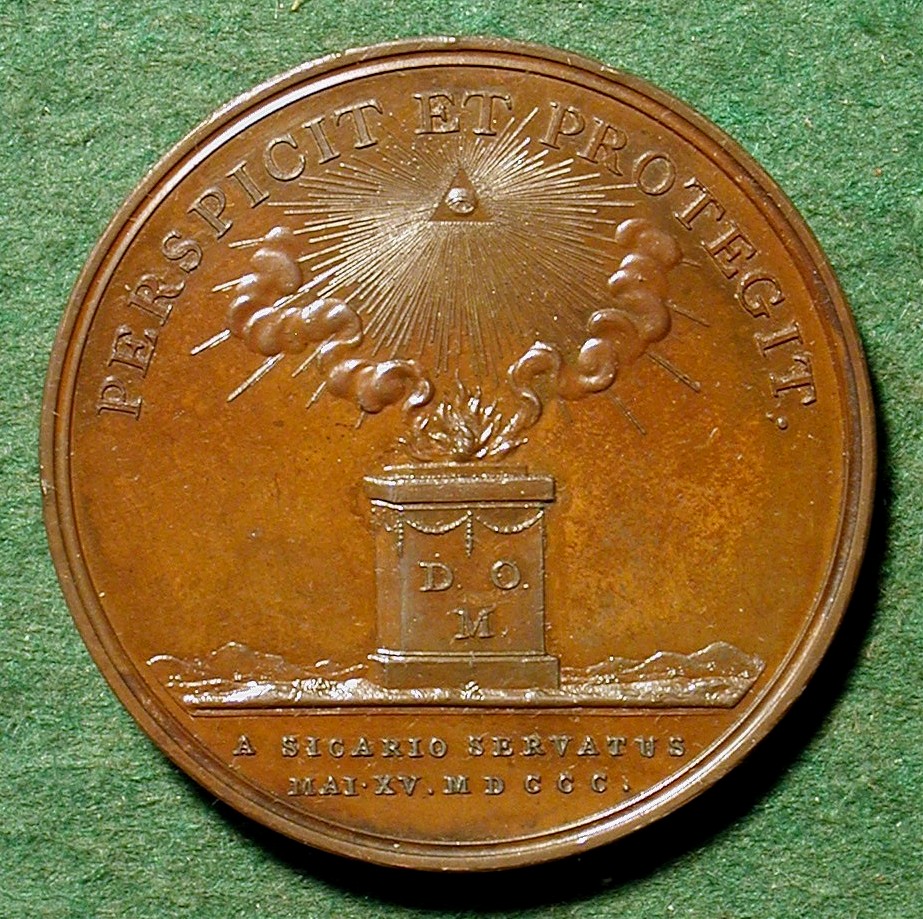

Historical and
Commemorative Medals
Collection of Benjamin Weiss
|
GEORGE III, PRESERVED FROM ASSASSINATION KUCHLER, C.H.: England, 1800, Bronze, 48 mm George III (George William Frederick) (1738-1820) was King of Great Britain and King of Ireland from 1760 until the union of these two countries in 1801, after which he was King of the United Kingdom of Great Britain and Ireland until his death. He was the third British monarch of the House of Hanover, but unlike his two Hanoverian predecessors he was born in Britain and spoke English as his first language. Early in his reign, Great Britain defeated France in the Seven Years' War, becoming the dominant European power in North America and India. However, many of its American colonies were lost in the American Revolutionary War. Further wars against Napoleonic France concluded in the defeat of Napoleon at the Battle of Waterloo in 1815. In the later part of his life, George III suffered from recurrent, and eventually permanent, mental illness, since diagnosed as porphyria. In 1810 a regency was established, and George III's eldest son, George, Prince of Wales, ruled as Prince Regent. On George III's death, the Prince Regent succeeded his father as George IV. The medal refers to the failure of an assassination attempt on the king on May 15, 1800, by James Hadfield, a discharged soldier, who fired a pistol at the royal box while the king was at the Drury Lane theater to see a comedy play. Hadfield was found "not guilty" on the grounds of insanity. |
|